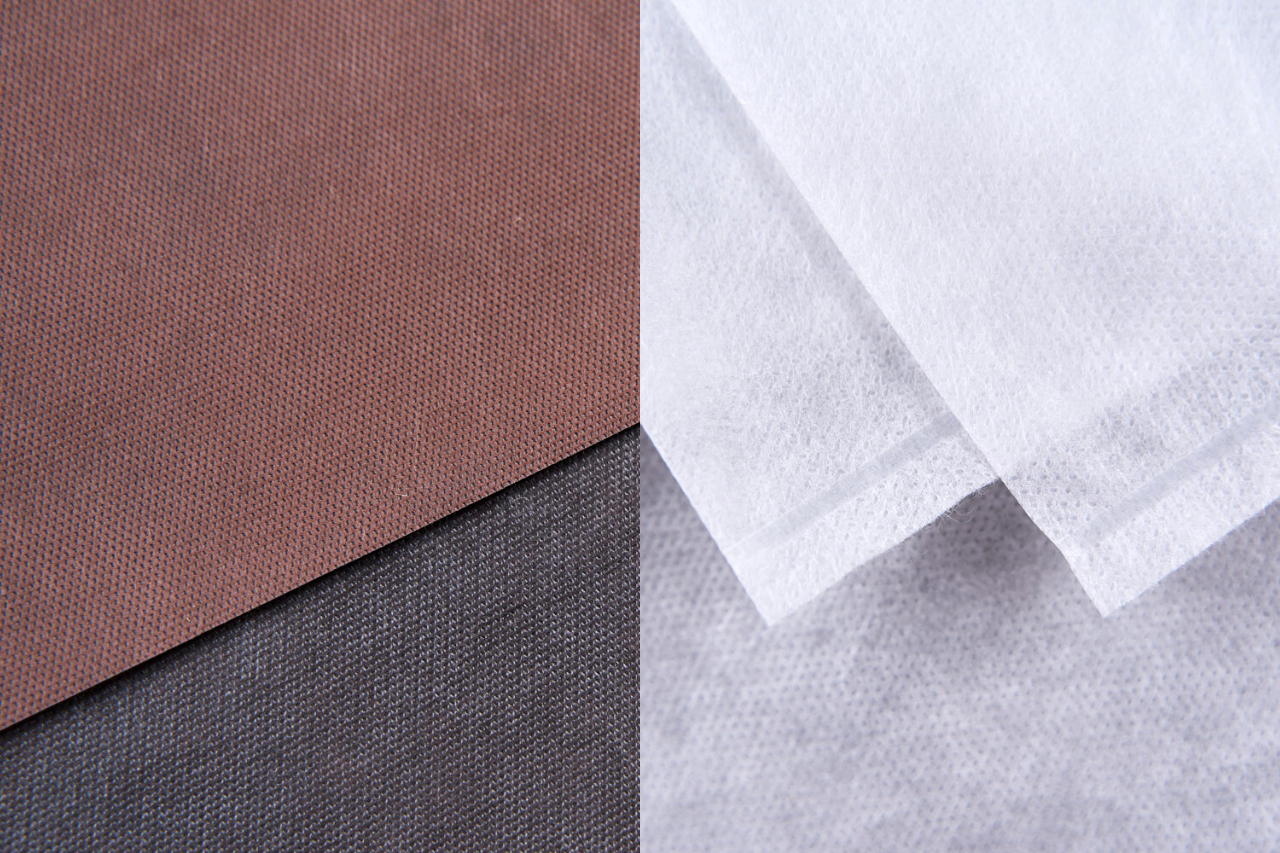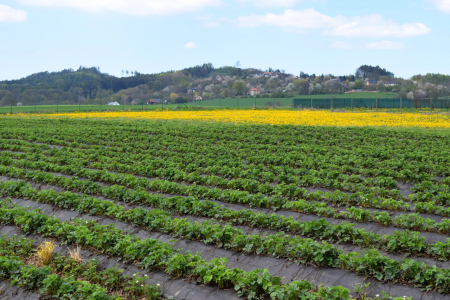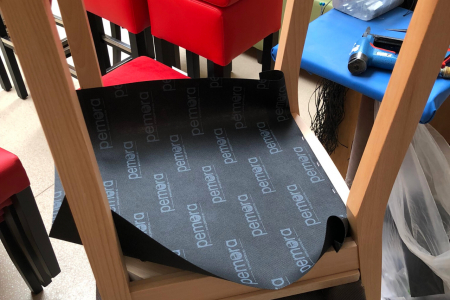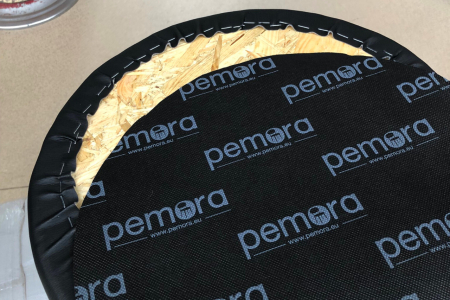
In most European countries, fabric weight is measured in grams per square metre (g/m2). Simply put, it indicates the density of the fabric — how dense individual fibres are within the fabric. In English-speaking countries, fabric weight is often expressed in ounces per yard squared (oz/yd2).
The finest fabrics (almost spider-web thin) weigh 12 g/m2, and the thickest ones up to 150 g/m2.
Nonwoven fabrics of 30 g/m2 and more are used for industrial processing. “Most often, we process spunbonds weighing 30, 45, 50, 70 or 100 g/m2. Should our client require a different GSM, we get it for them,” explains Milan Polouček, the Managing Director of Milmar.
Lighter nonwovens (weighing fewer g/m²) are less costly compared to thicker fabrics. The price per kilo is the same for both; however, you get more fabric per kilo when purchasing light nonwovens.
GSM of Nonwovens for Home and Garden
Nonwovens made with the unique spunbond method are often used to cover garden plants. White fabrics of 17 or 19 g/m2 weight are utilised in the growing season to protect plants from aphids and other pests or from late frosts.
Thicker nonwovens of 30 g/m2 weight provide plant frost protection. They’re usually beige, while thinner nonwoven covers are white.
Another type of nonwovens is landscape fabric for strawberry fields, usually of 45, 50 or 70 g/m2 in weight.
GSM of Nonwoven Packaging
Many companies use nonwovens or nonwoven bags for packaging. “The most suitable fabric for packaging weighs 30, 40 or 50 g/m2, it is pliable and fits products of various sizes and shapes. That said, the weight of the product needs to be considered. If it is too heavy, it is better to use a fabric with a higher GSM,” adds Milan Polouček.
Nonwovens are also used as padding between individual products in bulk packaging; nonwoven liners are made from 30 g/m2 fabric. Nevertheless, we recommend choosing higher GSM liners for heavy products.
GSM of Nonwoven Fabrics Used in Manufacturing
Nonwovens are used in various industries, including upholstery mainly for sofas and armchairs production. Nonwovens make a perfect foam seat cover — a more heavyweight piece of fabric is necessary (usually of 100 g/m2 weight).
Nonwovens are also popular in the health industry for various types of protective equipment. For example, fabric weight for face masks ranges between 25–30 g/m2.
Factors Affecting Weight of Nonwovens
Fabric weight (or density) affects properties of nonwovens, such as their tensile strength, breaking point, tear resistance, and air and water permeability. Here’s how it works.
Tensile Strength
This indicates the strength of the fabric. Tensile strength test in a lab looks like this: a strip of fabric is clamped in a tearing machine to measure the force that must be exerted before the fabric strip breaks.
Breaking Point
A strip of nonwoven fabric is loaded with a weight to measure how much the fabric stretches before it breaks. The higher the value, the more elastic the fabric.
Tear Resistance
Nonwoven fabric is torn in the middle (length-wise) and gets tested to determine how much force must be applied to widen the tear. The higher the value, the higher the tear resistance.
Here’s how individual values change with a different GSM.
| Weight | Tensile Strength | Breaking Point | Tear Resistance | ||||
|---|---|---|---|---|---|---|---|
| Method | EDANA 20.2-89 | EDANA 20.2-89 | EDANA 70.4-99 | ||||
| Unit | g/m2 | N/5 cm | % | N | |||
| Direction | MD | CD | MD | CD | MD | CD | |
| 16 | 26 | 24 | 53 | 58 | 17 | 18 | |
| 17 | 26 | 24 | 53 | 58 | 17 | 18 | |
| 19 | 35 | 24 | 55 | 58 | 20 | 20 | |
| 23 | 40 | 28 | 55 | 58 | 25 | 28 | |
| 30 | 45 | 40 | 75 | 80 | 35 | 35 | |
| 35 | 53 | 50 | 80 | 87 | 43 | 45 | |
| 40 | 65 | 60 | 90 | 95 | 50 | 55 | |
| 45 | 75 | 70 | 92 | 97 | 56 | 61 | |
| 50 | 90 | 85 | 95 | 100 | 65 | 70 | |
| 60 | 110 | 105 | 100 | 110 | 75 | 80 | |
| 70 | 120 | 115 | 105 | 110 | 85 | 90 | |
| 80 | 135 | 130 | 100 | 110 | 93 | 98 | |
| 90 | 155 | 150 | 95 | 100 | 103 | 105 | |
| 100 | 165 | 155 | 85 | 95 | 108 | 113 | |
| 110 | 175 | 160 | 80 | 90 | 115 | 120 | |
| 120 | 190 | 180 | 80 | 90 | 125 | 130 | |
| 130 | 195 | 190 | 75 | 90 | 130 | 135 | |
| 140 | 200 | 195 | 70 | 85 | 135 | 140 | |
| 150 | 205 | 200 | 50 | 70 | 140 | 145 | |
Download our datasheet for spunbond nonwoven fabrics
Choosing Your Perfect Nonwoven. What Else to Consider?
In addition to the appropriate weight, consider other properties of nonwovens, such as:
- UV protection,
- antistatic treatment,
- anti-scratch protection,
- hydrophilic treatment (for better absorbing properties).
At Milmar, we are happy to help you choose the best nonwoven. We recommend the suitable weight of the fabric and even customise our products for you.
Get in touch and tell us what you’re looking for.















